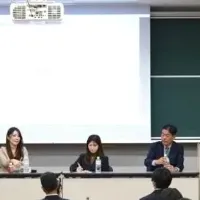
The Leading 50 Universities Driving Global Innovation and Progress
Clarivate's Report on the Top 50 Universities Driving Global Innovation
In an illuminating new report released by Clarivate Plc, a premier provider of transformative intelligence, the organization unveils the top 50 universities that are pivotal in spearheading global innovation. This analysis emphasizes the critical relationship between academic research and innovation in various industries, substantiated by thorough data derived from extensive patent citations and expert insights. Clarivate's analysis draws from robust sources including the Web of Science, the Derwent World Patents Index, and the Derwent Patents Citation Index. This comprehensive approach not only highlights how knowledge circulates between academia and industries, but it also underscores innovation as a global endeavor.
Key Findings
The report impressively showcases that the top 50 universities are spread across eleven countries, highlighting the most influential institutions located in countries ranging from Canada to South Korea. American universities, particularly Harvard, Stanford, and the Massachusetts Institute of Technology (MIT), lead the pack. Harvard stands at the forefront with its significant volume of impactful research output, while MIT excels in producing transformative innovations from its relatively smaller yet high-impact publications.
The findings reveal interesting patterns in citations at regional levels. For instance, companies in Eastern Asia and Europe often turn to local academic research for insights, but U.S. research tends to be the most referenced internationally. Notably, the United Kingdom emerges as a diverse force, with its research often acting as a vital link connecting various global regions.
Additionally, the report identifies five organizations—Roche, Johnson & Johnson, Centre National de la Recherche Scientifique, Samsung Electronics, and Siemens—that collectively account for over half of the citations linking innovative patents to academic research, reinforcing the loop between commercial advancements and scholarly contributions.
Professor Deborah Prentice, Vice-Chancellor of the University of Cambridge, which ranks 6th, notes, “Cambridge has a thriving community of spin-outs, start-ups and partnerships that demonstrates how academia and industry can work together to transform ideas into real-world impact.” This sentiment encapsulates the essence of collaboration that drives innovation.
Gordon Rogers, a senior figure in Clarivate's data science team, elaborates on the report’s findings, stating, “Groundbreaking ideas come from academic research. Our report shows that fostering relationships between academia and industry can stimulate technological advancements that address societal challenges in healthcare and sustainability.”
Emmanuel Thiveaud, Senior Vice President at Clarivate, adds that this report advances their mission to create a responsible framework for assessing the societal impacts of research. Their insights aim to enhance their forthcoming Web of Science Research Intelligence platform, a transformative solution meant to aid academic leaders in evaluating research beyond conventional metrics of impact.
Utilizing the Report’s Insights
The implications of this report extend to a variety of stakeholders, including university leaders seeking to benchmark their contribution to innovation, R&D executives aiming to forge beneficial academic partnerships, and policymakers interested in connecting research funding to tangible societal benefits. Patent strategists can also utilize this data to pinpoint which institutions lead in driving considerable and impactful innovations.
Concluding Thoughts
The report from Clarivate is an essential resource for anyone interested in the intersections of academia, industry, and innovation. It is freely available for download, and its findings could empower many stakeholders to make informed decisions and enhance collaboration across sectors. As the world continues to grapple with complex challenges, understanding and capitalizing on the synergy between research institutions and innovative industries will be key to driving future progress.
Topics Other)










【About Using Articles】
You can freely use the title and article content by linking to the page where the article is posted.
※ Images cannot be used.
【About Links】
Links are free to use.